Презентация chapter2 of the western civilization-2015-
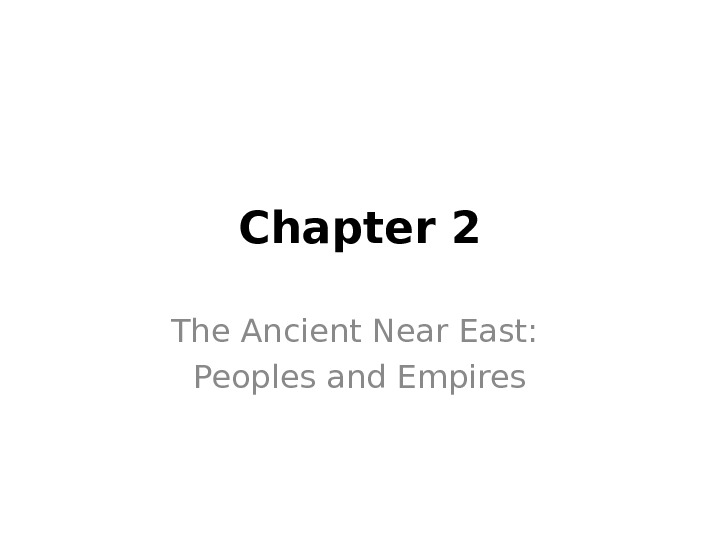




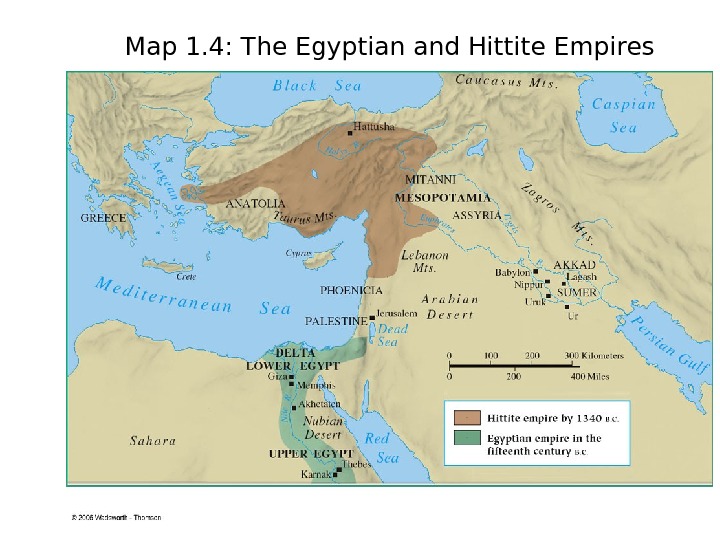
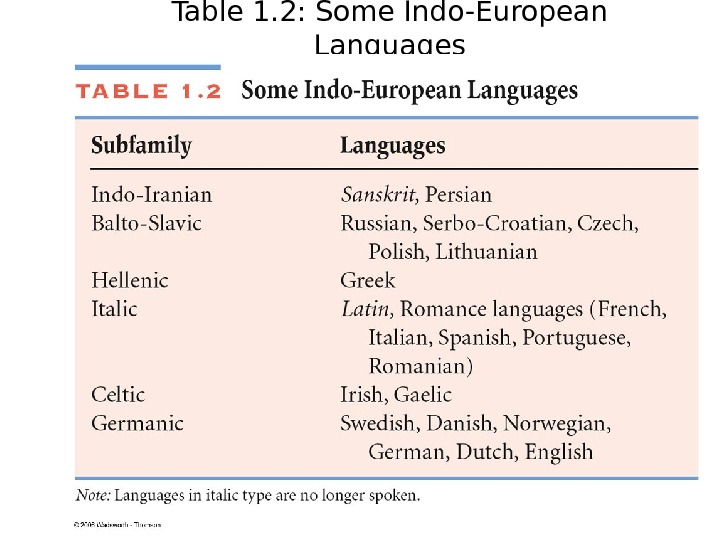




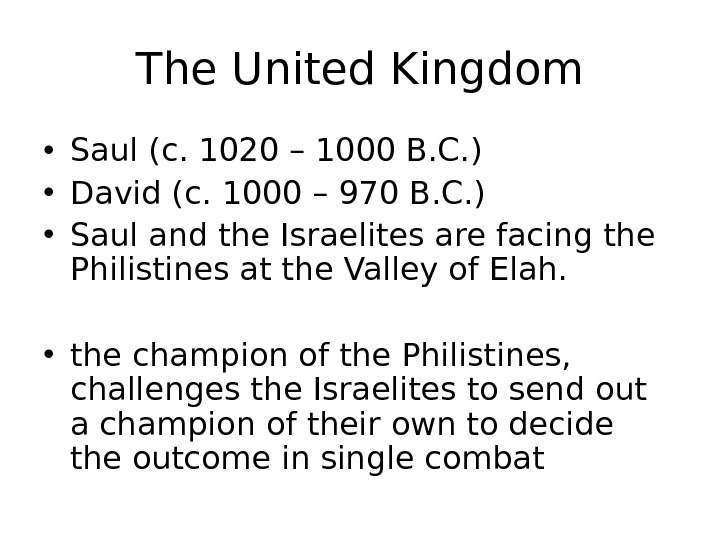














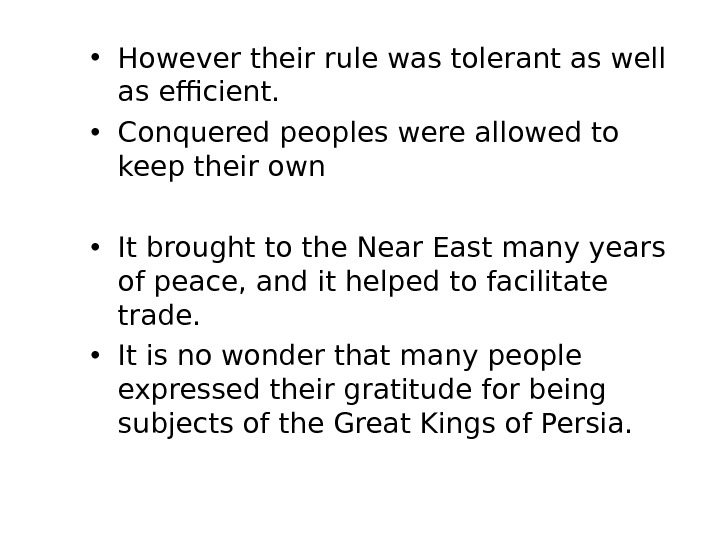
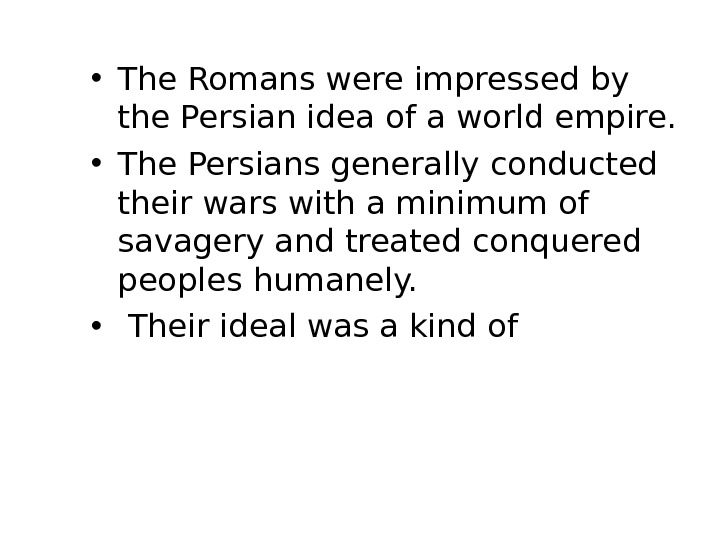


chapter2_of_the_western_civilization-2015-.ppt
- Размер: 2.3 Mегабайта
- Количество слайдов: 30
Описание презентации Презентация chapter2 of the western civilization-2015- по слайдам
 Chapter 2 The Ancient Near East: Peoples and Empires
Chapter 2 The Ancient Near East: Peoples and Empires
 Solomon’s judgement • Solomon became the king around 970 B. C.
Solomon’s judgement • Solomon became the king around 970 B. C.
 Timeline
Timeline
 The Impact of the Indo-Europeans • The original Indo-European speaking peoples lived in the steppe region north of the Black Sea or in southwestern Asia, in modern Iran or Afghanistan. • Around 2000 B. C. these people began to move into • Europe (including present-day Italy and Greece), India, and western Asia. • (including present-day Italy and Greece), India, and western Asia. • One group of Indo-Europeans moved into Asia Minor and Anatolia (modern Turkey), around 1750 B. C. built Hittite kingdom.
The Impact of the Indo-Europeans • The original Indo-European speaking peoples lived in the steppe region north of the Black Sea or in southwestern Asia, in modern Iran or Afghanistan. • Around 2000 B. C. these people began to move into • Europe (including present-day Italy and Greece), India, and western Asia. • (including present-day Italy and Greece), India, and western Asia. • One group of Indo-Europeans moved into Asia Minor and Anatolia (modern Turkey), around 1750 B. C. built Hittite kingdom.

 Map 1. 4: The Egyptian and Hittite Empires
Map 1. 4: The Egyptian and Hittite Empires
 Table 1. 2: Some Indo-European Languages
Table 1. 2: Some Indo-European Languages
 The Hebrews: “The Children of Israel” • The Hebrews were a Semitic-speaking people • Hebrew Bible – • They first appeared in • By 1, 900 b. c. they settled there. • Descendants of Abraham • They moved from Mesopotamia to Palestine. • Migration to Egypt- drought
The Hebrews: “The Children of Israel” • The Hebrews were a Semitic-speaking people • Hebrew Bible – • They first appeared in • By 1, 900 b. c. they settled there. • Descendants of Abraham • They moved from Mesopotamia to Palestine. • Migration to Egypt- drought
 – Slaves of Pharaohs – According to the Book of Exodus – led them out of Egypt (Exodus) around 13 th century B. C. – They crossed the Red Sea. – Moses parts the waters to provide his people an escape route. – Parting of the Red Sea – Ten Commandment – He led them to the Sinai peninsula – He persuaded them to become worshipers of Yahweh
– Slaves of Pharaohs – According to the Book of Exodus – led them out of Egypt (Exodus) around 13 th century B. C. – They crossed the Red Sea. – Moses parts the waters to provide his people an escape route. – Parting of the Red Sea – Ten Commandment – He led them to the Sinai peninsula – He persuaded them to become worshipers of Yahweh
 – They wandered for many years in the desert – Finally entered the land of Canaan – 12 tribes – Troubles with the Philistines – Origins of United Kingdom (c. 1200 – c. 1000 B. C. )
– They wandered for many years in the desert – Finally entered the land of Canaan – 12 tribes – Troubles with the Philistines – Origins of United Kingdom (c. 1200 – c. 1000 B. C. )
 Chronology: The Israelites
Chronology: The Israelites
 The United Kingdom • Saul (c. 1020 – 1000 B. C. ) • David (c. 1000 – 970 B. C. ) • Saul and the Israelites are facing the Philistines at the Valley of Elah. • the champion of the Philistines, challenges the Israelites to send out a champion of their own to decide the outcome in single combat
The United Kingdom • Saul (c. 1020 – 1000 B. C. ) • David (c. 1000 – 970 B. C. ) • Saul and the Israelites are facing the Philistines at the Valley of Elah. • the champion of the Philistines, challenges the Israelites to send out a champion of their own to decide the outcome in single combat
 • David declares he will defeat him. • Saul reluctantly agrees and offers his armor, • which David declines in favor of • He strikes Goliah in the head and cuts off his head • This famous story was known more because • sculpted David known as • Statue of David • • is a masterpiece of Renaissance sculpture created from 1501 to 1504.
• David declares he will defeat him. • Saul reluctantly agrees and offers his armor, • which David declines in favor of • He strikes Goliah in the head and cuts off his head • This famous story was known more because • sculpted David known as • Statue of David • • is a masterpiece of Renaissance sculpture created from 1501 to 1504.
 • His reign was one of the most glorious periods in Hebrew history. • Solomon (c. 970 – 930 B. C. ) – Temple of Jerusalem – Harem of 700 wives and 300 concubines – Stables for 4, 000 horses • The Divided Kingdom – Kingdom of Israel • 10 Northern Tribes-refused to submit to his son Rehoboam • Capital in Samaria – Kingdom of Judah • 2 Southern Tribes • Capital in Jerusalem
• His reign was one of the most glorious periods in Hebrew history. • Solomon (c. 970 – 930 B. C. ) – Temple of Jerusalem – Harem of 700 wives and 300 concubines – Stables for 4, 000 horses • The Divided Kingdom – Kingdom of Israel • 10 Northern Tribes-refused to submit to his son Rehoboam • Capital in Samaria – Kingdom of Judah • 2 Southern Tribes • Capital in Jerusalem
 Map 2. 1: Palestine in the First Millennium B. C.
Map 2. 1: Palestine in the First Millennium B. C.
 • Assyria conquers Kingdom of Israel (722 B. C. ) • They were all dispersed • They were called ten lost tribes. • Jerusalem Destroyed – The southern kingdom of Judah sustained for a while but was also destructed in 586 B. C. by the Chaldeans from Babylonia. – People of Judah were forced to move to Babylonia. – They lived there as captives.
• Assyria conquers Kingdom of Israel (722 B. C. ) • They were all dispersed • They were called ten lost tribes. • Jerusalem Destroyed – The southern kingdom of Judah sustained for a while but was also destructed in 586 B. C. by the Chaldeans from Babylonia. – People of Judah were forced to move to Babylonia. – They lived there as captives.
 Return to Jerusalem from Babylonia in 538 B. C. by permission of the Persian who became the new conqueror in that area. • The ruler was changed to Alexander the Great in the fourth century B. C. • However, they survived and were known
Return to Jerusalem from Babylonia in 538 B. C. by permission of the Persian who became the new conqueror in that area. • The ruler was changed to Alexander the Great in the fourth century B. C. • However, they survived and were known
 Spiritual Dimensions of Israel • The most important characteristic of Judaism is • monotheism, the belief that there is only one God for all peoples. • 10 Commandments • Regulation of economic, social and political life of all Hebrews – Prophets • Yahweh’s voice to his people • Universalism and Social Justice • Separation between Jews and non- Jews
Spiritual Dimensions of Israel • The most important characteristic of Judaism is • monotheism, the belief that there is only one God for all peoples. • 10 Commandments • Regulation of economic, social and political life of all Hebrews – Prophets • Yahweh’s voice to his people • Universalism and Social Justice • Separation between Jews and non- Jews
 The Persian Empire • Indo-European speaking people • At the beginning of the 7 th century the Persians became known. • Unified under the Achaemenid dynasty • Cyrus the Great (559 – 530 B. C. ) – Conquered Kingdom of Lydia (c. 547 B. C. ) – Conquered Greek city-states – Conquered Mesopotamia (539 B. C. ) – He died in
The Persian Empire • Indo-European speaking people • At the beginning of the 7 th century the Persians became known. • Unified under the Achaemenid dynasty • Cyrus the Great (559 – 530 B. C. ) – Conquered Kingdom of Lydia (c. 547 B. C. ) – Conquered Greek city-states – Conquered Mesopotamia (539 B. C. ) – He died in
 • Cambyses (530 – 522 B. C. ) – Conquered Egypt – Revolt spread – He was murdered • Darius the Great (521 – 486 B. C. ) – Crushed the revolts – Seized the throne – Ionian Revolt in Asia Minor – Invasion and Defeat in Greece (490 B. C. ) – By the reign of Darius the Persians had created
• Cambyses (530 – 522 B. C. ) – Conquered Egypt – Revolt spread – He was murdered • Darius the Great (521 – 486 B. C. ) – Crushed the revolts – Seized the throne – Ionian Revolt in Asia Minor – Invasion and Defeat in Greece (490 B. C. ) – By the reign of Darius the Persians had created
 Map 2. 3: The Persian Empire at the Time of Darius
Map 2. 3: The Persian Empire at the Time of Darius
 • His great achievement is • to standardize the currency and weights and measures. • Another legacy of Persian rulers is • Royal Road- from Sardis to Susa • Some 1, 600 miles in length • These roads contributed • to ease
• His great achievement is • to standardize the currency and weights and measures. • Another legacy of Persian rulers is • Royal Road- from Sardis to Susa • Some 1, 600 miles in length • These roads contributed • to ease
 Persian Religion • Zoroastrianism – Zoroaster (born c. 660 B. C. ) – Monotheistic-dualistic • Ahuramazda • Ahriman (Evil Spirit) • Struggle between good and evil
Persian Religion • Zoroastrianism – Zoroaster (born c. 660 B. C. ) – Monotheistic-dualistic • Ahuramazda • Ahriman (Evil Spirit) • Struggle between good and evil
 • Although the religion did not continue in its original state, it influenced a lot in the Western World continuously, • in a different version such as • Mithraism was the oldest one, deriving its name from Mithras, a lieutenant of Ahura-Mazda • Mithras finally won recognition by many of the Persians as the god most deserving of worship.
• Although the religion did not continue in its original state, it influenced a lot in the Western World continuously, • in a different version such as • Mithraism was the oldest one, deriving its name from Mithras, a lieutenant of Ahura-Mazda • Mithras finally won recognition by many of the Persians as the god most deserving of worship.
 • He believed to have lived an earthly existence involving great suffering and sacrifice. • He performed • giving bread and wine to man and • ending • Finally, he created much of the ritual of Zoroastrianism, proclaiming Sunday as • • the twenty-fifth of December
• He believed to have lived an earthly existence involving great suffering and sacrifice. • He performed • giving bread and wine to man and • ending • Finally, he created much of the ritual of Zoroastrianism, proclaiming Sunday as • • the twenty-fifth of December
 Conclusion • The Assyrian Empire was the first to unite almost all of the ancient Near East. • Even larger, however, was the Persian empire. • Their form of government was adopted by the later Roman monarchs, • in its character of divine-right despotism.
Conclusion • The Assyrian Empire was the first to unite almost all of the ancient Near East. • Even larger, however, was the Persian empire. • Their form of government was adopted by the later Roman monarchs, • in its character of divine-right despotism.
 • However their rule was tolerant as well as efficient. • Conquered peoples were allowed to keep their own • It brought to the Near East many years of peace, and it helped to facilitate trade. • It is no wonder that many people expressed their gratitude for being subjects of the Great Kings of Persia.
• However their rule was tolerant as well as efficient. • Conquered peoples were allowed to keep their own • It brought to the Near East many years of peace, and it helped to facilitate trade. • It is no wonder that many people expressed their gratitude for being subjects of the Great Kings of Persia.
 • The Romans were impressed by the Persian idea of a world empire. • The Persians generally conducted their wars with a minimum of savagery and treated conquered peoples humanely. • Their ideal was a kind of
• The Romans were impressed by the Persian idea of a world empire. • The Persians generally conducted their wars with a minimum of savagery and treated conquered peoples humanely. • Their ideal was a kind of
 Discussion Questions • Explain about Indo-European speaking people! • Where did Hebrews appear first and where did they end up last and how? • What was Persian’s achievement and how was their rule? • Explain about Zoroastrianism and its later version, Mithranism. • In what way did Persian empire affect Roman empire later?
Discussion Questions • Explain about Indo-European speaking people! • Where did Hebrews appear first and where did they end up last and how? • What was Persian’s achievement and how was their rule? • Explain about Zoroastrianism and its later version, Mithranism. • In what way did Persian empire affect Roman empire later?
 Web Links • Internet Jewish History Sourcebook • The Old Testament and the Ancient Near East • ABZU: Internet Guide to the Ancient Near East • Ancient Mesopotamia and the Levant • Hittite Homepage • Cyrus the Great • AVESTA: Zoroastrian Archives
Web Links • Internet Jewish History Sourcebook • The Old Testament and the Ancient Near East • ABZU: Internet Guide to the Ancient Near East • Ancient Mesopotamia and the Levant • Hittite Homepage • Cyrus the Great • AVESTA: Zoroastrian Archives
